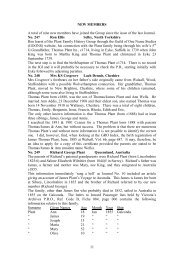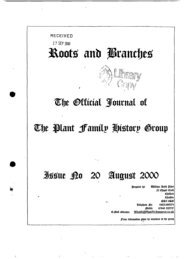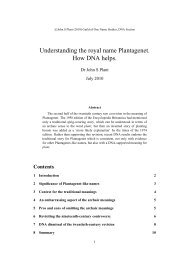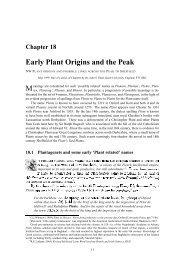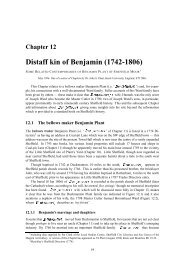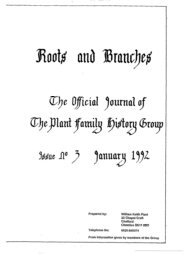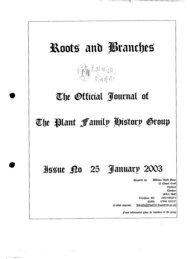Create successful ePaper yourself
Turn your PDF publications into a flip-book with our unique Google optimized e-Paper software.
Nonetheless, the arrival of these French Calvinists in Leek would no doubt<br />
have had its effect not only on the industrial and social life of the town,<br />
but on its religious life too. These Frenchmen incidentally, were<br />
joined later by others in the Napoleomc wars, when French prisoners chose<br />
to settle in Leek on finding many of French extraction already residents<br />
here. They settled as a little colony in the land beside the Church<br />
which became known as Petty France, an anglicisation of the French 'Petite<br />
France' (Little France).<br />
John Wesley visited Leek several times. After one visit on Easter Day<br />
in 1782, he wrote,<br />
"I preached in the Church, morning and evening. We have about 800<br />
communicants. In the evening we had a love-feast and such a one as I have<br />
not seen for many years. Sixteen or Eighteen persons gave a clear<br />
scriptural testimony of being renewed in love and many others told what<br />
God had done for their souls with inimitable simplicity"<br />
It is a great sign of grace that at that time the Vicar, the Rev.Simon<br />
Mills, whose incumbency stretched from 1758-1785, should have welcomed<br />
him. By this time, all too few churches remained open to John Wesley,<br />
for he had made many enemies, especially among the Bishops. Before<br />
Mr.Mills' incumbency, there were many fights between Churchmen and<br />
Methodists. A curate of Leek, John Richardson, became a Methodist and<br />
as ordained men were scarce among the early followers of Wesley, he played<br />
an important part in the early history of Methodism. It was he who buried<br />
John Wesley.<br />
The Van Tuyl memorial in the North aisle is notable for being a memorial<br />
to one of the Huguenot families that came to Leek in the 16th Century.<br />
Their history is interesting. The original Van Tuyls were wealthy<br />
titled people. They had two sons, Peter John and John Peter, whom they<br />
broughtover in fruit panniers, having disguised themselves as fruit<br />
peddlars. Both sons went to America in 1700, Peter John to Nova Scotia<br />
and John Peter to New York, where he prospered and became one of the<br />
founders of the City of New York. His son Otto, however, became a<br />
pirate and was drowned in New York harbour on Christmas Day, 1761. His<br />
son Andrew took after his grandfather and became a prosperous merchant<br />
in New York. Their grandson, Peter Bogart Van Tuyl, married Olive<br />
Bullock of Leek. This memorial tells of their Bullock ancestors and<br />
their own children.<br />
In the Parlour there are two grave stones of special interest. One is<br />
a Forester's Grave Slab. The Sherwood Forest once stretched from<br />
Nottinghamshire to Cheshire and Leek was well within its boundaries.<br />
There were many outlaws who lived off the King's deer and generally<br />
defied the power of the Norman and Angevin kings by living in this huge<br />
forest. Robin Hood was only the most notorious of many such fellows.<br />
Foresters were like sheriffs of the forest. appointed to keep order and<br />
put down outlaws.<br />
33



